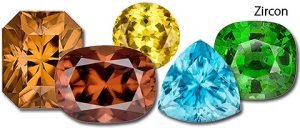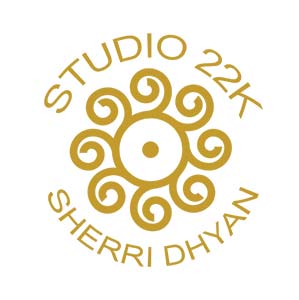Zircon
Mineral: Neosilicate
Hardness: 6 – 7.5
Birthstone: December, Anniversary: 4th (blue) and 11th (yellow)

The oldest known object on Earth is a 4.4 billion year old Zircon crystal, a mere 140 million years
younger than the planet itself and older than the moon when it formed. It is the heaviest and densest of gems, but it is most famous for the one thing it is not: Zircon is in no way related to Cubic Zirconia, the man-made diamond substitute.
Gem-quality Zircon comes from Southeast Asia (Thailand and Cambodia) and East Africa. The name Zircon comes from the Persian word “Zargun,” meaning “gold color,” likely referring to the brownish red or gold tone of the gem when it is found in nature.
Zircon is usually heat treated and results in a wide range of colors: from red to orange, yellow to brown, and blue to green. Natural blue is extremely rare but it is also the most popular color, especially in Victorian era jewelry. However, it can easily be made by heat-treating brown (the most common shade Zircon is found in).
Other names for Zircon in the past have been Starlite (in reference to the blue colored gems), Jacinth or Hyacinth (yellow, orange, brown, or red), and Jargon or Jargoon (colorless, smoky, or pale yellow). Colorless Zircon gems have also been referred to as “Matura diamonds,” which has added to the confusion about what Zircon is. Though Zircon rivals the optical quality, luster, and brilliant fire of diamond, it is softer, more brittle, and about 50% denser.
Green Zircon is said to represent the green foliage of the Kalpa tree, or the glowing tree once gifted by the Hindu gods that bears gemstone fruit and has Zircon leaves. It is reputed to be an excellent amulet for travelers, endowing the wearer with wisdom, honor, and riches.
